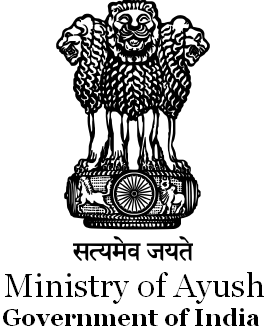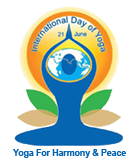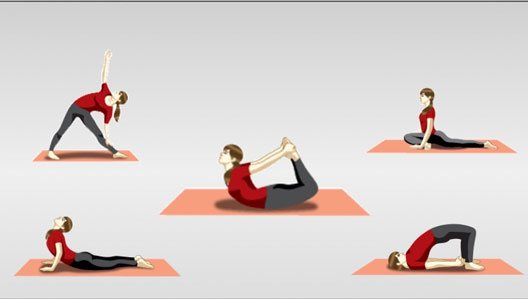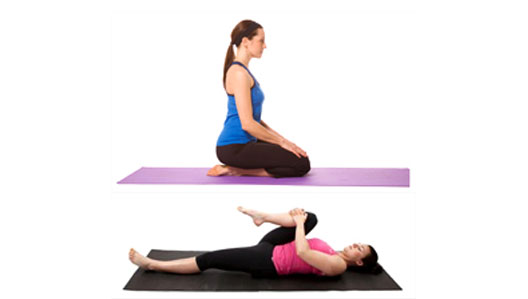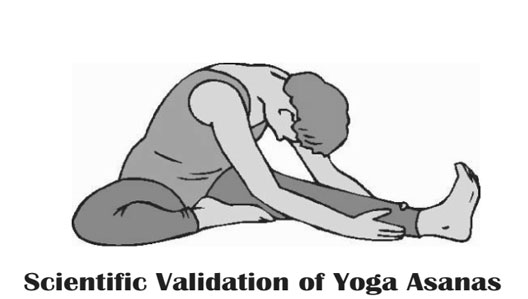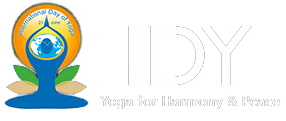Yoga for Ischemic Heart Disease (IHD)
2020-06-02

Definition: Ischemic means that an organ (e.g., the heart) is not getting enough blood and oxygen supply. This can be due to narrowing of the arteries due to ageing or due to blockage by cholesterol plaques. Ischemic heart disease, also called coronary heart disease (CHD) or coronary artery disease, is the term given to heart problems caused by narrowed heart (coronary) arteries that supply blood to the heart muscle.
Problem: In India, studies have reported increasing CHD prevalence over the last 60 years, from 2% to 4% in urban populations and 1-2 % in rural populations1 .
Risk factors and Causes: Sedentary life style (53.84%), hypertension and dyslipidemia (47.11% each), smoking (43.27%), Diabetes (35.57%), and Obesity (9.61%). Multiple risk factors were found in 75% of patients. Women are at higher risk of morbidity of IHD, compared to men.
Complications: The deaths and disability from Ischemic heart disease has more than doubled in last 30 years2. Chest pain, abnormal heart beats (arrhythmia), Heart Attack, Chest pain, Heart failure are some of the common complications of ischemic heart disease.
Goal of Yoga Intervention:
- Counselling, development of awareness and insight to refrain from risk factors
- Implementation of asana, pranayama and relaxation practices to destress
- Reduction of body mass index, waist circumference, systolic and diastolic blood pressure, dyslipidemia through enhanced physical activity and yoga.
- Reducing inflammation and endothelial dysfunction through diet and yoga.
Rationale for yoga intervention: The role of yoga-based lifestyle modification serves as a vital role for preventing, maintaining and elevating the positive health of people suffering from IHD and reducing further complications. The rationale for yoga intervention is to reduce stress mediated inflammation and metabolic dysfunction, modulate cardiovascular reactivity to stress, and modulate health behaviours that pose risk for CVD.
Five major Yoga practices: Mind Sound Resonance Technique (MSRT), Deep Relaxation Technique (DRT), Nadisuddhi Pranayama, Breathing Techniques – Hands in-and-out breathing, hands stretch breathing, tiger breathing; sukshma vyayama (loosening exercises of joints), and meditation.
Evidence for using Yoga in Ischemic Heart Disease: Several RCTs have shown yoga to be useful in prevention of Ischemic heart disease3. Studies have shown yoga to modulate systolic blood pressure, total cholesterol, triglycerides, and LDL cholesterol4. Several other studies have shown improvement in endothelial dysfunction, baroreflex sensitivity and myocardial perfusion status.
Avoid: Forward bending, Hyperventilation practices such as kapalabhati, bhastrika; inverted asanas, asanas that increase intra-abdominal pressure, Vaman Dhouthi or Laghu Shanka Prakshalana with salt water.
Precautions: Practices to be done slowly paced with awareness on breath. Always consult a Yoga and Naturopathy Physician or a doctor if you feel uneasy after practice.
Conclusion: Yoga may reduce biochemical risk factors for cardiac disease and improve reperfusion status along with conventional treatment in patients with IHD and prevent heart attacks.
References:
- Gupta R, Mohan I, Narula J. Trends in Coronary Heart Disease Epidemiology in India. Ann Glob Heal. 2016;82(2):307-315. doi:10.1016/j.aogh.2016.04.002
- Forouzanfar M, Moran A, Flaxman A, heart GR-G, 2012 undefined. Assessing the global burden of ischemic heart disease: part 2: analytic methods and estimates of the global epidemiology of ischemic heart disease in 2010. Elsevier.
- Cramer H, Lauche R, Haller H, Dobos G, Michalsen A. A systematic review of yoga for heart disease. Eur J Prev Cardiol. 2015;22(3):284-295. doi:10.1177/2047487314523132
- Raghuram N, Parachuri V, … MS-I heart, 2014 undefined. Yoga based cardiac rehabilitation after coronary artery bypass surgery: One-year results on LVEF, lipid profile and psychological states–A randomized. Elsevier.
- Prabhakaran D, Chandrasekaran AM, Singh K, et al. Yoga-Based Cardiac Rehabilitation After Acute Myocardial Infarction: A Randomized Trial. J Am Coll Cardiol. 2020;75(13):1551-1561. doi:10.1016/j.jacc.2020.01.050
Aniruddha B.Arya
BNYS Intern
TSYNM, SVYASA

